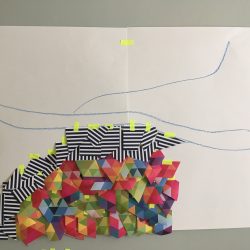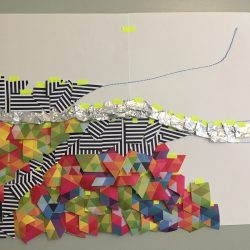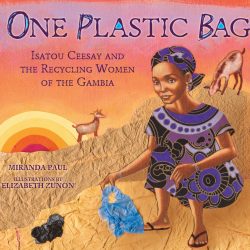Family Activities: Lines that Link Humanity (Quick Tip)
Family Activities: Lines that Link Humanity
By Courtney Klemens, Manager of Family Programs, Angie Faulk, Manager of Camps, and Emily Perreault, Pre–K Programs Educator
Create
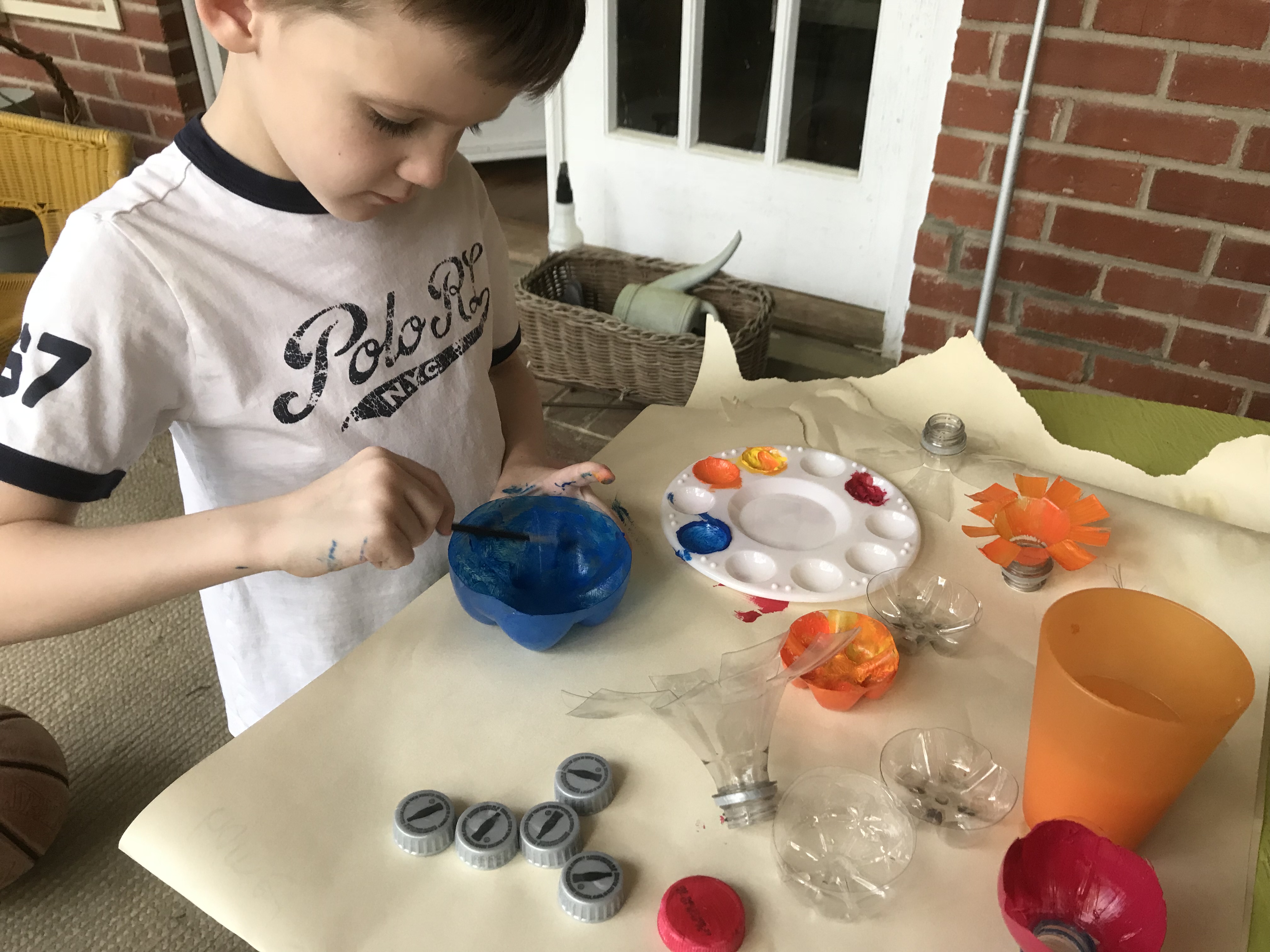
Recycled bottle flowers. Find inspiration in your recycling bin! Gather plastic bottles to create an outdoor installation of flowers for your community to enjoy. Use scissors or an X-acto knife to cut off necks and bottoms of plastic bottles; then, cut a few snips from the edge toward the center to create petals. Flatten and arrange with your hand. You can glue bottle caps to the center of your flower for a pistil or stamen, and paint the plastic for a bright, beautiful bloom. After creating a whole bouquet, display your flowers on a post, fence, or tree to bring color to your neighborhood!
Indoor mural. Looking up at Lines That Link Humanity can make you feel tiny, because it takes up an entire wall. Make a large-scale work of art at home using paper and found materials. First tape a roll of paper up on a wall or window (you can use wrapping paper, or tape smaller sheets of paper together to create a background). Then, inspired by the texture and movement of El Anatsui’s work, glue smaller materials in layers to cover the surface. Our favorite materials for a mural include cut-up magazine pages, pieces of aluminum foil, old postcards, or even dried skins of acrylic paint. Experiment to discover which materials you like best!
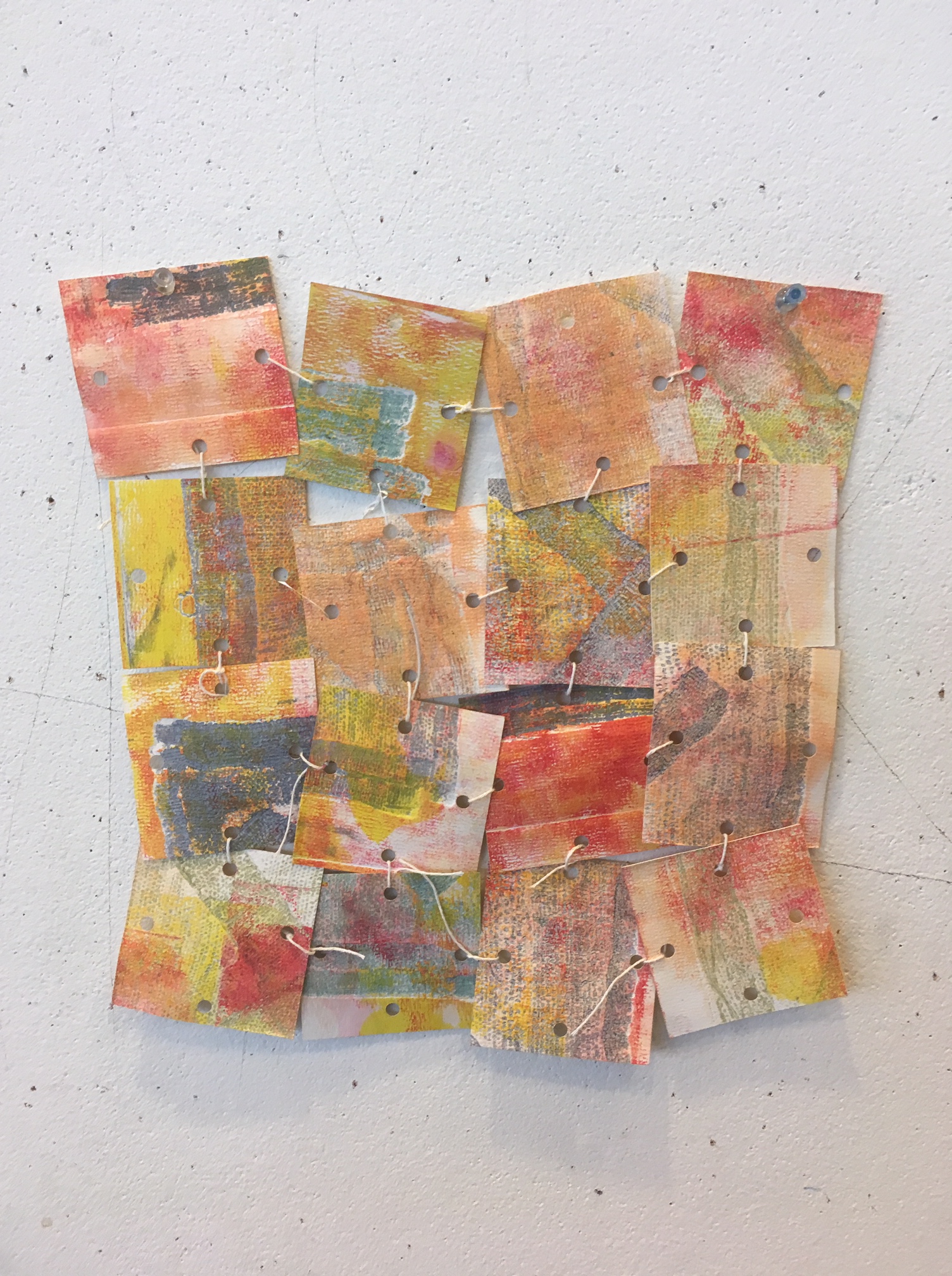
Sewn wall hanging. Use markers or watercolor paints to cover a sheet of paper with large areas of color or pattern. When your design is complete, cut the paper into strips, and then cut those strips into squares. Punch a hole in each corner of your paper squares (there will be 4 holes per square). Then, using thread or yarn, loop through the holes of two squares and knot them together. Continue until all of your squares are tied into a new grid. You can lay out the squares into a grid before you tie them together, or let chance decide how they’ll be arranged and tie one at a time.
Paper+ weaving. Create a loom and weave on it, all from materials you find around the house! Watch this video from North Carolina fiber artist Taylor McGee, who took inspiration from El Anatsui’s art to create a simple weaving from foil, fabric, maps, and more. You can find more weaving inspiration from McGee on her Instagram.
Read
One Plastic Bag: Isatou Ceesay and the Recycling Women of the Gambia by Miranda Paul; illustrated by Elizabeth Zunon
This is the story of a creative problem solver who helped tackle her community’s challenge with discarded plastic bags that were becoming dangerous for animals and gardens. Isatou Ceesay and her friends started collecting plastic bags to crochet into colorful purses. Like El Anatsui, Ceesay worked with a team to recycle and transform reusable materials. Enjoy a read-aloud video of this book through this video.
Kenya’s Art by Linda Trice; illustrated by Hazel Mitchell
Inspired by a museum exhibition where the art is made from recycled materials, Kenya and her family reuse materials to make their own artwork. Afterward, Kenya tells her classmates what she learns about reuse and recycling. Watch a read-aloud video of this book.


